How to find 20+ blog ideas your audience can’t wait to read


I’d just gotten the biggest guest posting opportunity of my career – the chance to write for a site with more than 500,000 engaged subscribers.
Everything was at stake. A great post would take my business to an entirely new level. A bad one would make it tough to ever get that kind of opportunity again.
There was one catch, though. They wanted me to submit five to seven blog post ideas so they could pick their favorite.
In the past, I would have panicked. Oh my gosh! Five to seven ideas? It’s hard enough to come up with ONE!
That’s what I used to think.
Today, coming up with five blockbuster blog post ideas is a (yawn) simple and easy fix because now I have a list of more than 50 must-read ideas on hand at all times.
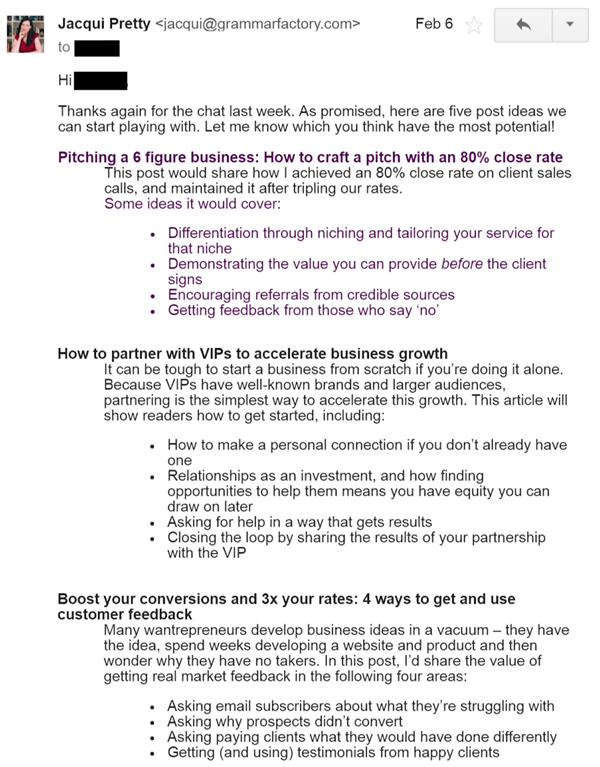
Some of the pitches I had ready to go.
My secret is a simple system that I’ve taught every one of my clients. No matter your industry -- coaching, wellness, fashion, you name it -- this process works. In just 20 minutes, you can go from no ideas to having enough blog ideas to post for an entire year.
Even better, these posts will be ones that your audience loves, and they’re great for guest posts, too. They’ll turn readers into subscribers and subscribers into buyers.
The way you do this is with guided mind mapping.
Now, you may have heard about mind mapping before. And if you’re like me, you probably felt like it left you with a big mess. Maybe something like this:

How is THIS supposed to help you?
That is why I recommend using guided mind mapping.
You still end up with a diagram of blog ideas. However, this process is much easier and faster.
Rather than leaving you with an overwhelming spider web, you have a structured, organized chart of high-quality ideas. And every idea is a piece of irresistible content that your readers will want to read. These ideas will make them eager to join your list and buy your products.
Just follow my three simple steps, and “no idea” will never be a problem again.
Killer Blog Idea Step 1: Know your readers’ problems better than anyone else does
When your readers feel like you “get” them and can help them solve their problems, they’ll be excited to read, comment on, and share your content. That means more blog readers, email subscribers, and, ultimately, customers.
In order to establish a close relationship like this with your readers, you need to identify the problems they face.
Ask yourself:
- What does your audience struggle with?
- What are their biggest frustrations?
- What problems would they pay anything to solve?
Spend five minutes brainstorming this. Then boil these problems down to one phrase that sums them all up.
This problem holds the key to writing posts that make you money. And it will be the foundation of your mind map. Using either mind mapping software or some poster paper, put that in the center of the page. Like this:
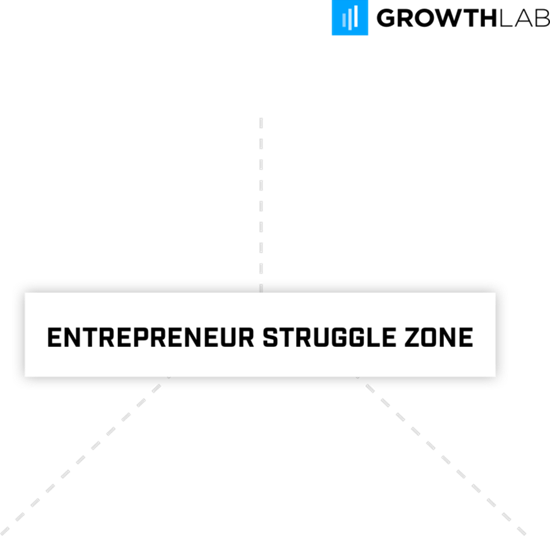
This looks bare now, but it’ll be loaded with ideas by the end of this post.
The example above is from my business, Grammar Factory. We help entrepreneurs write and publish books so they can position themselves as leaders in their fields. In other words, we help with their business problems.
I coined this the “entrepreneur struggle zone” and put it on my map.
Killer Blog Idea Step 2: Ask three questions to outshine your competitors
Now it’s time for the “guided” part of the process.
You’re going to use three simple questions to create an organized list of compelling ideas of content. These questions also make things much faster.
The questions are:
- What are your audience’s mistakes? What are they doing that’s causing their problems? What mistakes are they making when they try to implement a solution?
- What solutions can you offer to help them?
- Why does your audience want to change? Why is it important for them to address their problems?
Here is how this looks on your mind map:
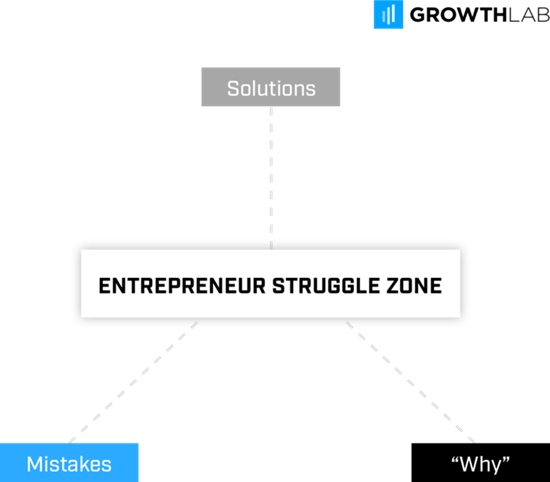
Now start to answer these questions.
For example, the mistakes my readers make include having no clear niche and not differentiating themselves from their competitors:
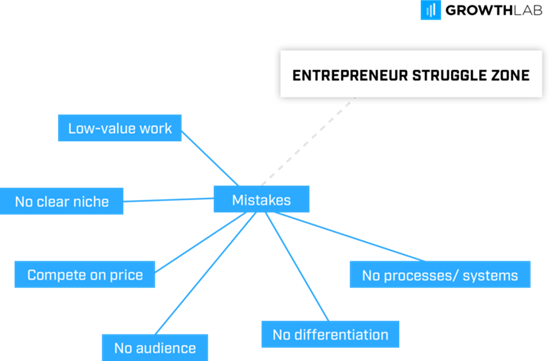
Use short phrases on your mind map; no need for details.
As I turned to the solutions I can offer -- and then why changing matters to my readers -- I ended up with this:
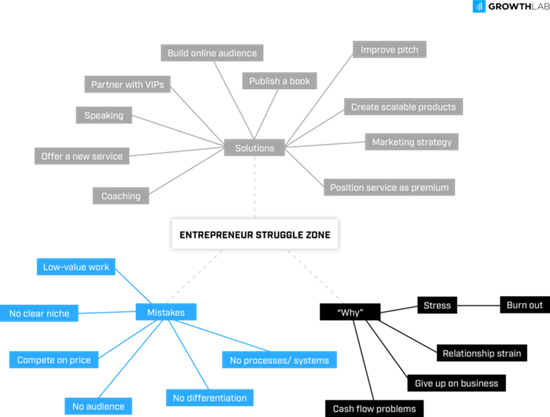
In 5-10 minutes, your map will look like this.
Step 3: Double your number of ideas in minutes
You have some ideas on your map. Now you’re going to multiply them and end up with at least twice as many -- maybe even five times as many -- in about 10 minutes.
Plus, these ideas will be more specific, which means your readers will be more likely to:
- Click
- Read
- Comment
- Sign up for your emails
- Make a purchase if you’re selling something in the post
Think about it. How many posts do you come across daily about “secrets of successful entrepreneurs”? It’s been overdone, so you ignore those headlines.
But if you see something like “How to Be the Entrepreneur Reporters Call First,” you’ll click.
That’s the power of digging deeper. Take your ideas to the next level so you stand out and get read.
This is easy to do. Simply repeat Step 2 for every bubble on your mind map. So for each item you just listed -- every mistake, solution, and reason -- ask those same three questions:
- What are your audience’s mistakes when it comes to this item?
- What solutions can you offer to help them with this?
- Why is it important for them to address this problem?
Returning to the Grammar Factory example, one of my solutions was publishing a book.
I then added my readers’ mistakes, which include not planning a budget and skimping on production costs.
Next I came up with some solutions or steps involved in publishing a book, which include writing, editing, design, printing, and more.
Lastly, some reasons they want to write a book because this gives them expert status and it helps them educate potential clients about the value they can provide.
Here is my full mind map for this section:
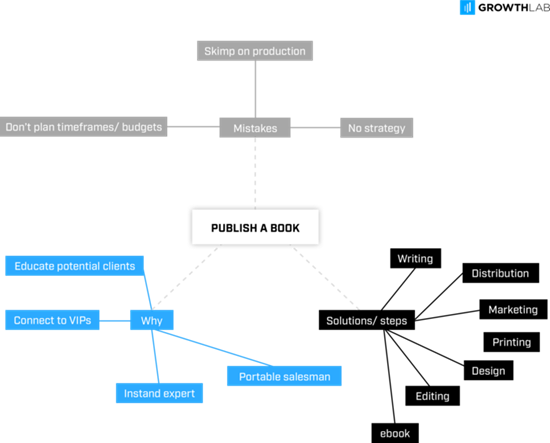
30+ blog ideas in just minutes.
Just by drilling down on publishing a book, I came up with more than 14 ideas. That means that if I drill down on the 20 other ideas I have above in Step 2, I’ll end up with more than 200 ideas! That’s enough to blog three to four times a week for a year.
As you continue to do this with your map, you will come up with tons of ideas, too.
3 proven ways to turn your post ideas into must-read content
Ideas are great, but they’re only the beginning. You need to turn your ideas into content that engages your audience so they:
- Share them with their networks
- Subscribe to your email list
- And, in the future, buy your products
Every single item on your mind map is an idea for a piece of content. That could be a blog post, a guest post, or you could even combine several items to create a 5,000-word “ultimate guide” that teaches readers everything about one bigger issue.
I like to use some easy formulas to come up with these ideas.
1. Blog post ideas about one item
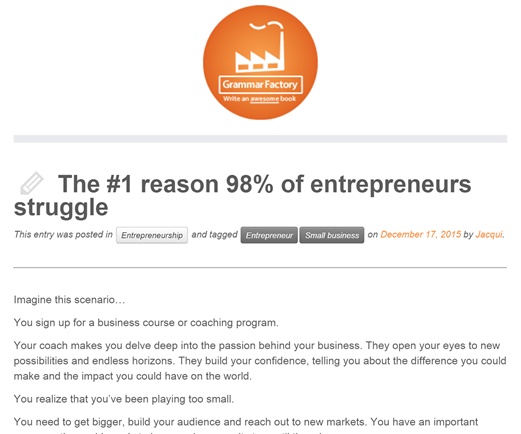
I combined a mistake with a solution for this post.
Roundup post ideas on several items
Ultimate guides
You can combine a mistake, solution, and reason into “The ultimate guide to [implementing solution].” This guide would include:
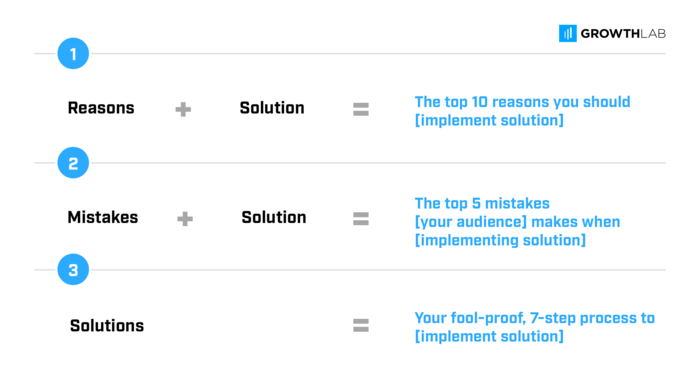
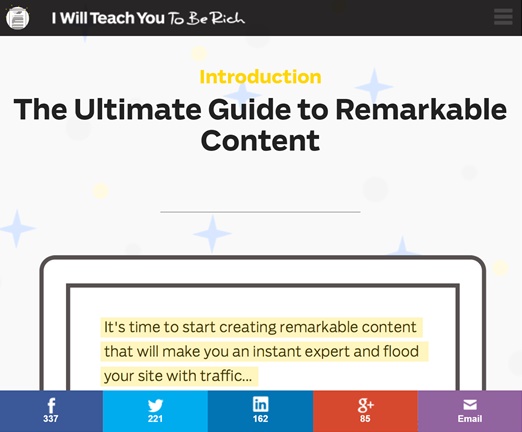
Ramit Sethi’s Ultimate Guide has 6 parts.
You can use these formulas over and over to generate almost endless ideas.
How to write profitable blog posts on autopilot
Now you don’t need to waste your time searching for your next great idea. You already have more than 20 to choose from and start writing.
This is especially great for guest posts. You simply pick the best ideas to pitch for each website’s audience.
And when you’re planning the email series to sell your next product launch, you’ll never struggle to think, “What else can I say about [the problem your product solves]?”
Now I consistently blog at least twice a month on my site, and I’m doing two to three guest posts every month.
At the same time, while my subscriber list is still small, it’s nearly doubled in just four months thanks to my guest posts.
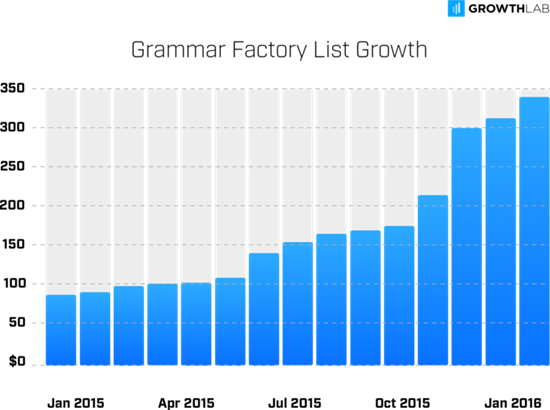
I grew from 178 subscribers in December 2015 to 345+ today.
Like this blog post? Learn how to create amazing content like this that attracts and engages your target buyers with our FREE Ultimate Guide To Remarkable Content.
It’s one of the best things I’ve published (and 100% free), just tell me where to send it: